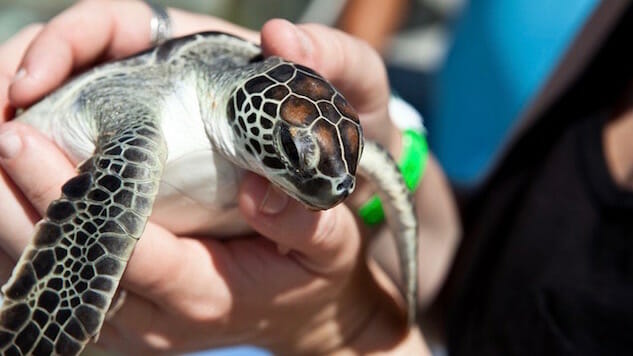Climate Change Could Be Responsible For Too Many Female Sea Turtles

Every year, nearly 50,000 sea turtles lay their eggs on Florida’s beaches. Researchers monitor each new generation of sea turtles closely to determine their health, especially as the environment changes and external factors impact wildlife populations.
One significant change that has occurred in the sea turtle populations is the shifting sex ratio as more female turtles are born than males. Over the last few years, scientists have noticed an overwhelming number of female hatchlings on Florida’s coast, almost 95 percent of hatchlings were females in some cases.
Warming temperatures may be a driving factor behind the changing ratios. Unlike many other animal species, sea turtles’ sex is not determined by chromosomes but by environmental factors like temperature. In warm conditions, hatchlings are more likely to develop as females, whereas cool conditions are more conducive to producing male turtles.
Jeannette Wyneken and her colleagues at Florida Atlantic University have been studying the sea turtles on Florida’s beaches and have developed a method to predict the sex of turtles before they hatch by tracking environmental factors like temperature and a protein that is only found on female cells. Their goal is to aid in conservation efforts to protect the turtles and to forecast the ratio that will be present in each generation.
-

-

-

-

-

-

-

-

-

-

-

-

-

-

-

-

-

-

-

-

-

-

-

-

-

-

-

-

-

-

-

-

-

-

-

-

-

-

-

-








































